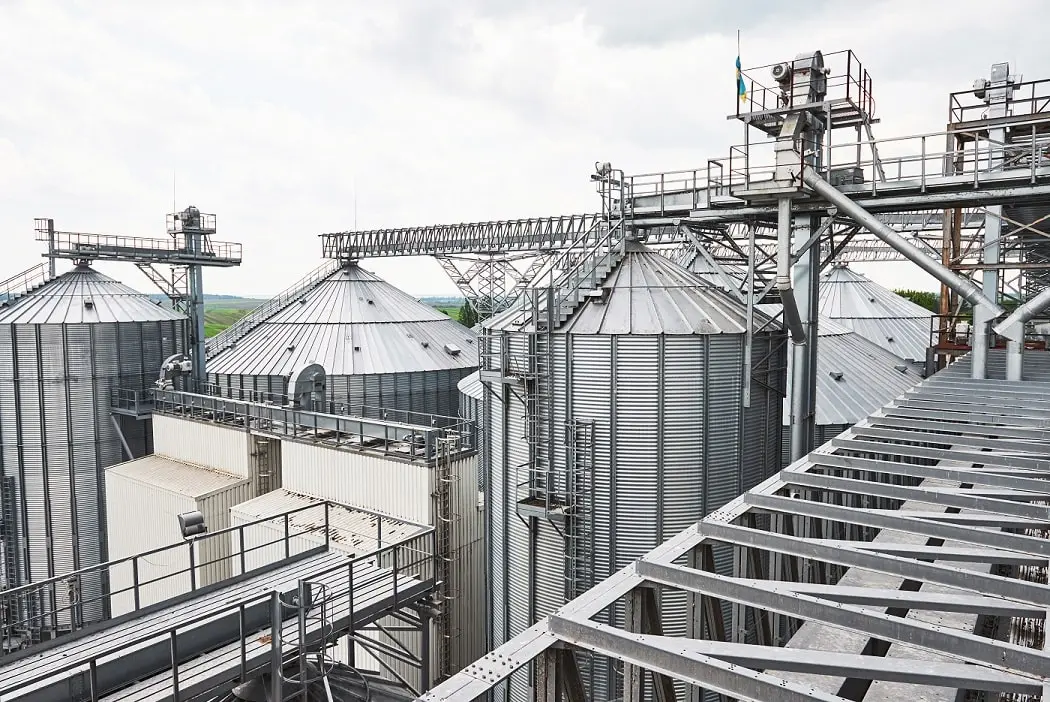Basics of Level Measurement
Level measurement is a crucial technique employed to measure the surface level within tanks, reactors, or vessels. Ensuring the safety and profitability of industrial processes, it is imperative for plants to possess a dependable and accurate level measurement system.
Incorrect measurements have the potential to lead to excessively higher or lower level readings within vessels. Inadequate levels may result in equipment damage, whereas excessive levels can trigger overflow, posing safety hazards and potential environmental issues.
Types of Level Measurement Technologies
Based on measurement techniques, level measurement can be primarily classified into two categories: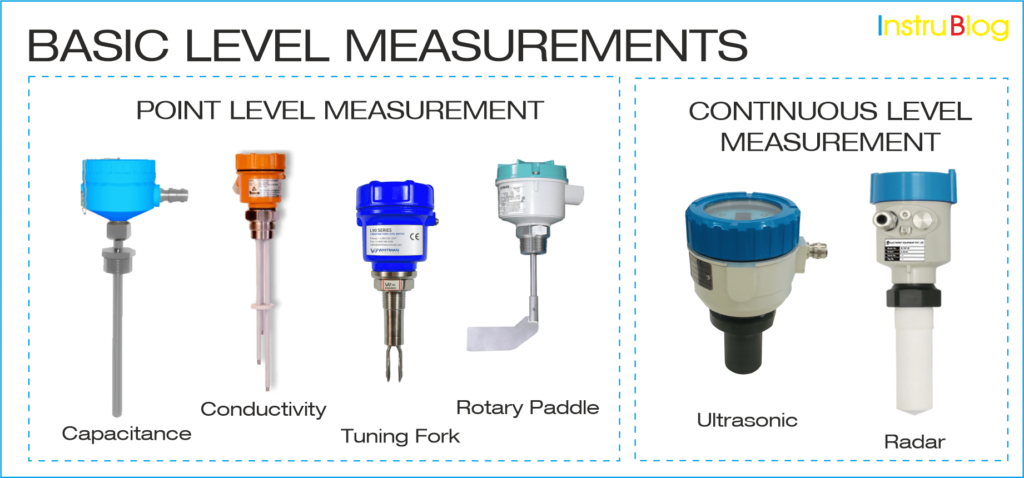
Product Images Credit: Electronet India, Trumen, Whitman Controls, Lesman (Siemens)
Point Level Measurement
Point level sensors are utilized to measure specific or preset levels of liquid, slurry, or solid media at predetermined set points. These sensors are designed to detect when the material reaches the desired level, triggering an output or providing an indication to indicate the presence or absence of the material at that specific point.
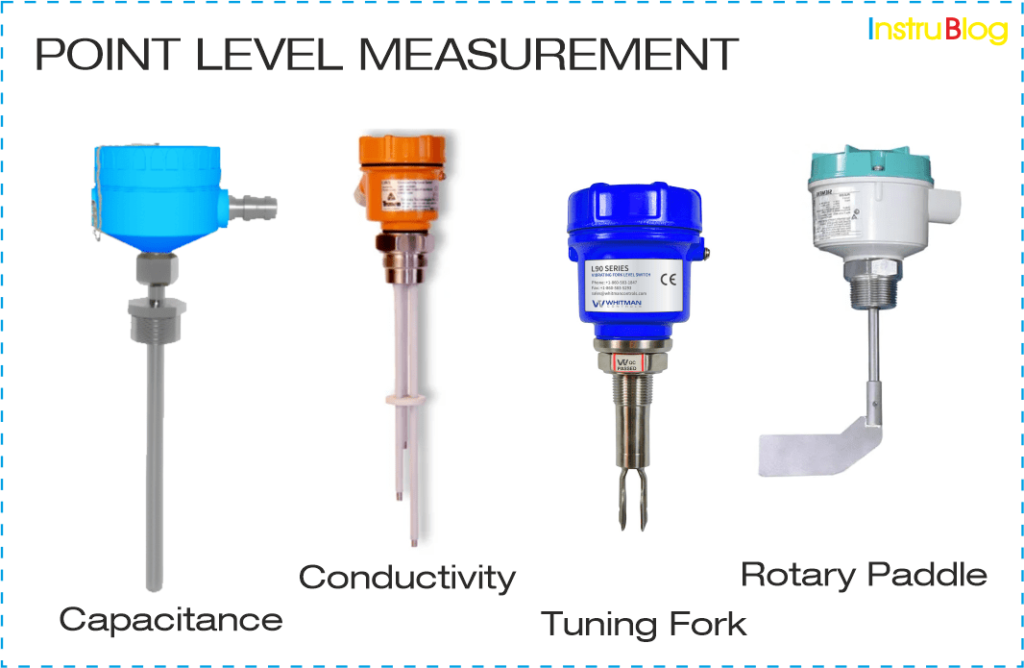
Various types of sensors are employed for point level measurement, including:
- Capacitance Probe Switches
- Conductivity (Resistance) Level Sensors
- Rotating Paddle Switches
- Vibrating (Tuning Fork) Level Sensor
These are just a few examples of the different level measurement devices used for point level measurement applications. Each type of sensor has its own working principle and is chosen based on the specific requirements of the application.
Continuous Level Measurement
Continuous level measurement sensors are designed to continuously monitor and measure the level of solids and liquids in storage tanks, vessels, and other open or closed storage systems. Unlike point level sensors that provide information at specific set points, continuous level measurement sensors offer real-time data and a continuous output representing the level of the material.
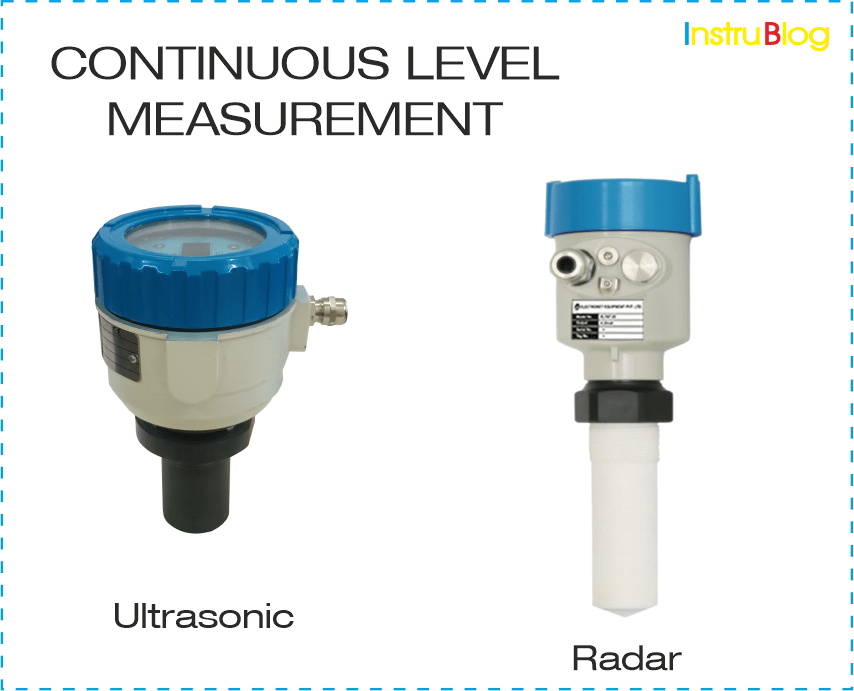
These sensors employ various technologies to measure the level continuously, including:
-
Ultrasonic Level Transmitters:
-
Radar Level Transmitters:
These continuous level measurement sensors play a vital role in monitoring inventory, process control, and ensuring optimal storage and production operations by providing real-time and precise level data.
Let’s explore in detail
Point Level Measurements
Capacitance Probe Switches
Capacitance probe switches are sensor rods that, when installed in closed vessels or storage tanks, function as capacitors.
Capacitance sensors are widely utilized in liquid storage tanks, making them particularly popular. However, these sensors find applications in various tank level monitoring scenarios, including food equipment, mobile fluid containers, and medical applications.
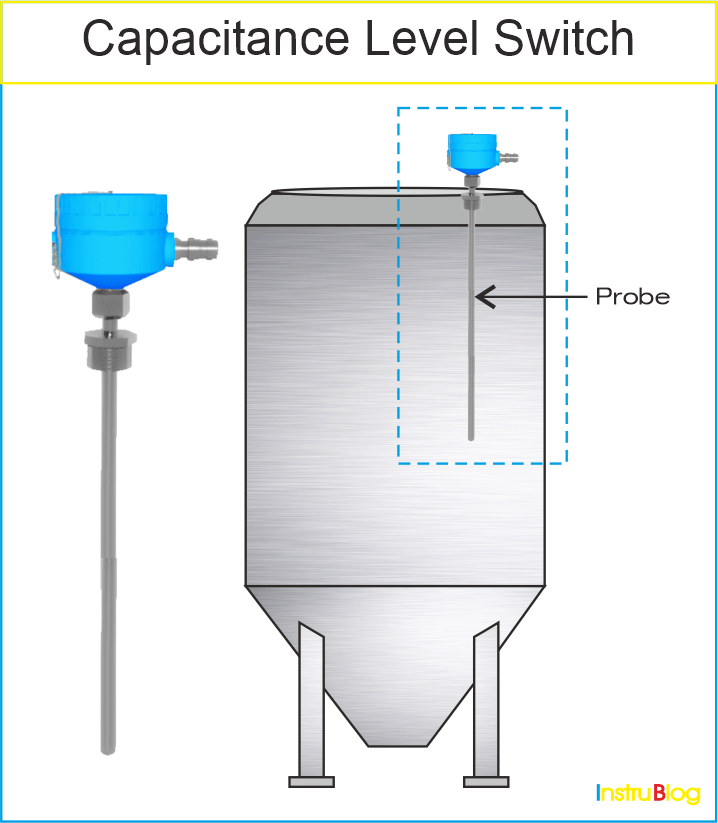
Capacitance level sensors offer several advantages, including:
- No mechanical or moving parts: Capacitance level sensors operate without the need for any mechanical or moving components, which reduces the risk of wear and tear and increases their reliability.
- Long lifespan: Due to their design without mechanical parts, capacitance level sensors tend to have a longer operational lifespan, providing consistent and reliable level measurement over an extended period.
- Easy installation and replacement: Capacitance sensors are relatively simple to install and replace, facilitating convenient maintenance or replacement in the event of any malfunction or defect.
- Compact size: Capacitance level sensors are typically compact in size, making them suitable for installations where space is limited or when a smaller sensor footprint is desired.
Conductivity (Resistance) Level Sensors
Conductivity or resistance point level sensors are another type of sensor that utilizes a probe to detect changes in conductivity.
These sensors consist of a probe with a pair of electrodes that apply a small alternating current. When the probe comes into contact with a liquid, it causes a change in conductivity, resulting in the flow of current. This change in current flow indicates a high or low level, providing a signal for level detection.
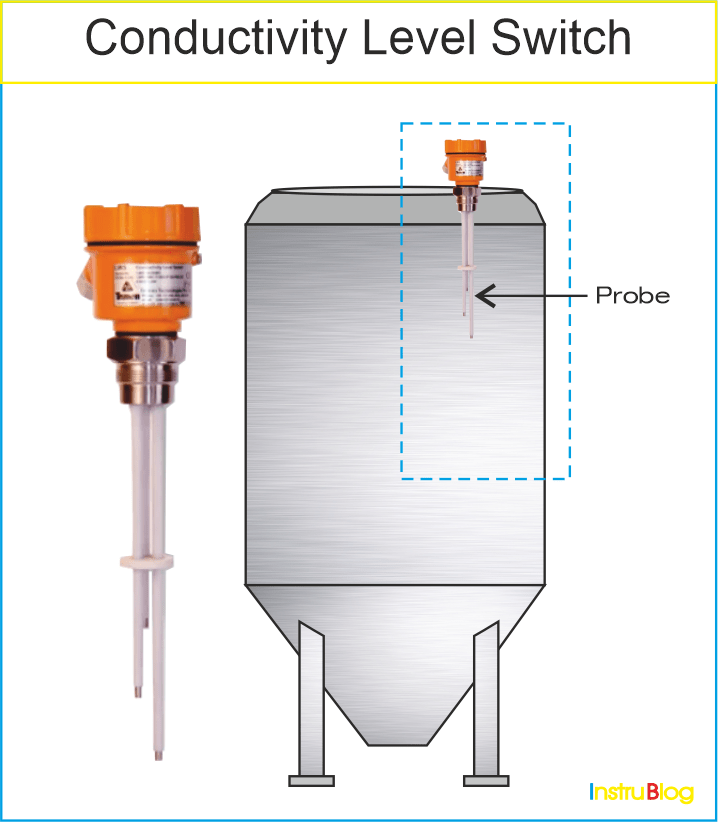
Conductivity or resistance level sensors offer several advantages, including:
- Simple design: Conductivity or resistance level sensors are characterized by their straightforward design, which makes them easy to understand and use. Their simplicity contributes to their reliability and ease of implementation.
- Robust and low cost: These sensors are known for their robustness and durability, allowing them to withstand harsh environments and demanding conditions. Additionally, conductivity or resistance level sensors are often cost-effective, providing a practical solution for level measurement applications.
- Versatile installation: One of the key advantages of conductivity or resistance level sensors is their ability to be installed at any desired point in the tank or vessel. This flexibility allows for customized placement based on specific application requirements.
- Multi-point detection: Conductivity or resistance level sensors have the capability for multi-point detection, enabling the measurement of levels at multiple positions within a tank or vessel. This feature is particularly useful for applications that require monitoring and control at various points.
Rotating Paddle Switches
The sensor includes a rotating paddle connected to a shaft, which is driven by an electric motor. In the absence of material, the rotating paddle freely rotates. The motor is mounted on a sliding fit rotating disc, which is linked to a spring.
When the rotating paddle comes into contact with the material, the torque requirement increases, causing the spring to extend. The extension of the spring is detected, and the power supply to the motor is automatically turned off until the paddle is no longer in contact with the material. This mechanism ensures that the rotating paddle remains uncovered and ready for the next level measurement.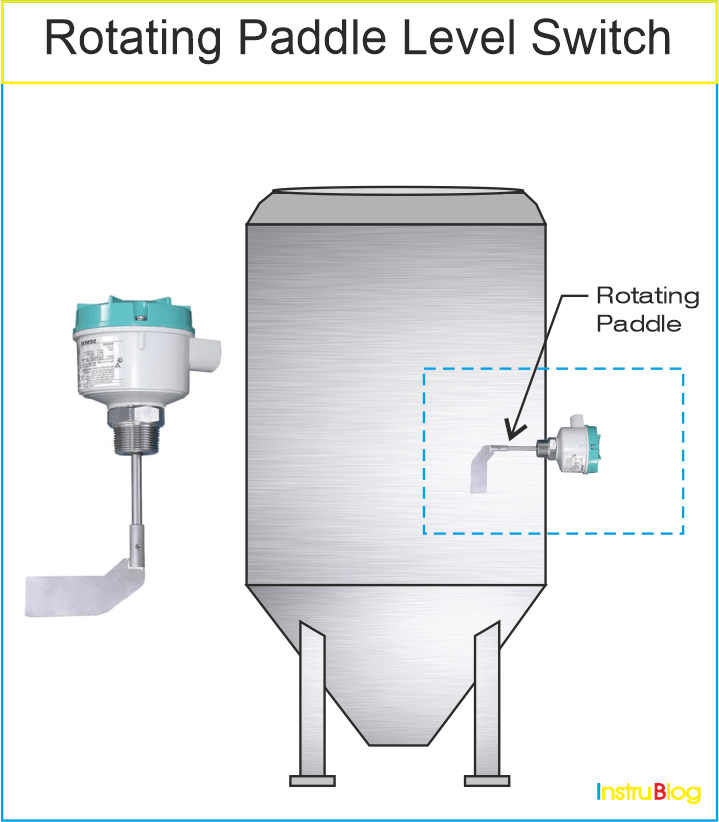
This type of sensor is commonly employed for the detection of solid materials. The lifespan of the sensor can be influenced by various factors, with the following being notable:
- Wear and tear due to motion: If the sensor involves moving parts or mechanisms, continuous motion can lead to wear and tear over time. Friction and mechanical stress may cause degradation and impact the lifespan of the sensor.
- Ingress of dust: Dust particles or particulate matter present in the environment can enter the sensor housing or components, potentially affecting its performance and longevity. Accumulation of dust can lead to clogging or interference, impacting the sensor’s accuracy and reliability.
Vibrating (Tuning Fork) Level Sensor
Vibrating level sensors utilize two forks that vibrate at their natural resonant frequency. These forks are typically mounted on the side or top of a tank using a flange.
When no material is present, the tuning forks vibrate at their natural resonant frequency, which is detected by the sensor’s circuitry. However, when the forks come into contact with the material, the vibration frequency changes, and this variation is detected by the circuitry. This change in frequency serves as an indication of the material’s presence or absence, allowing for accurate level measurement.
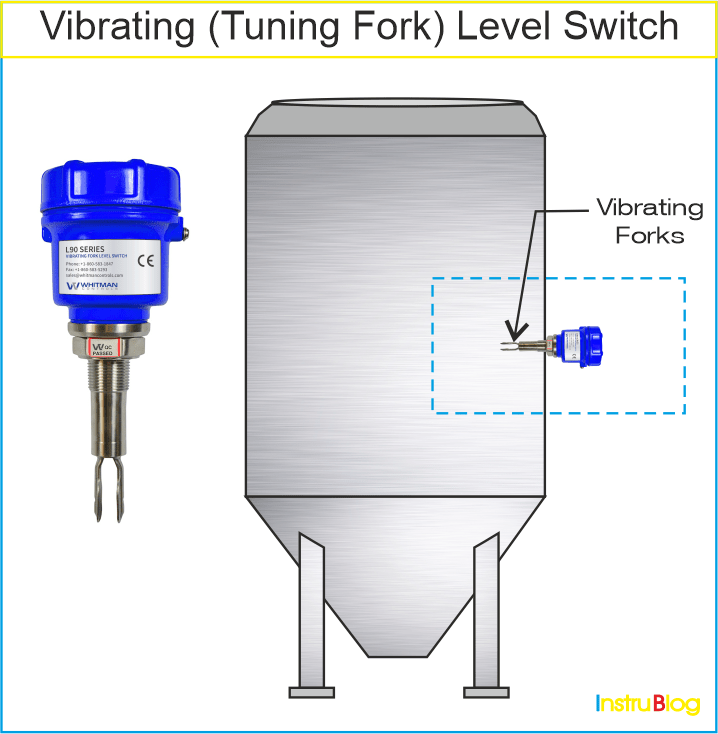
Vibrating fork level switches offer several advantages, including:
- Unaffected by flow, bubbles, foam: These switches are designed to be highly reliable even in the presence of flow, bubbles, or foam. The vibrating forks can effectively detect the level of the material regardless of these factors, ensuring accurate and consistent measurements.
- Cost-effective and compact: Vibrating fork level switches are known for their cost-effectiveness and compact size. They provide a practical solution for level detection applications, offering reliable performance at a reasonable cost. Their compact design allows for easy integration into various systems and installations.
- Easy installation: Installing vibrating fork level switches is very easy and hassle-free. They often feature a simple mounting mechanism, allowing for quick installation in tanks, vessels, or pipes.
Continuous Level Measurements
Ultrasonic Level Sensor
Ultrasonic level sensors employ sound waves to detect the level within a closed tank. This technique relies on the transmission of sound waves towards the target object, which then reflects the waves back to the sensor. Consequently, ultrasonic level measurement can be considered a form of sound-based level detection.
By calculating the time taken for the ultrasonic pulses to travel to the object and back, the distance to the object can be determined. Typically, an ultrasonic level sensor is installed on the top of a closed tank, allowing for accurate and non-contact level measurement.
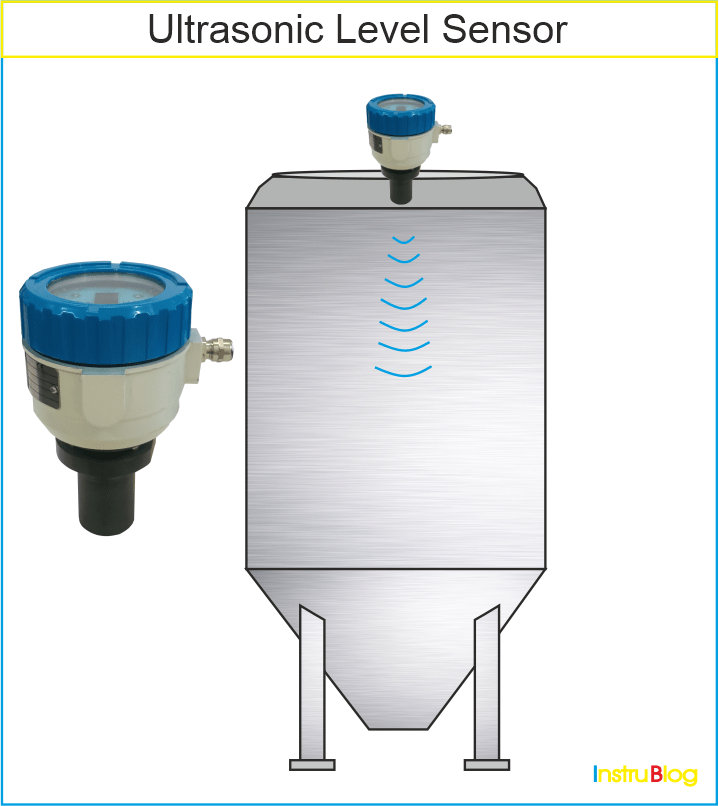
Ultrasonic level sensors offer several advantages that make them highly desirable for level measurement applications:
- No moving parts: They are designed without any moving components, which reduces the risk of mechanical failure and increases their overall reliability. This contributes to their long lifespan and low maintenance requirements.
- Small in size: They are typically compact in size, making them easy to install in various spaces and configurations. Their small form factor allows for flexibility in placement, even in tight or limited spaces.
- Very reliable: They have a proven track record of reliability. They are known for their accurate and consistent measurements, providing reliable data for process control and monitoring purposes.
- Non-contact measurement: They use ultrasonic waves to measure the distance to the target material without physical contact. This non-contact feature eliminates the risk of contamination, corrosion, or damage to the sensor, making them suitable for a wide range of applications.
- Self-cleaning: They often have self-cleaning capabilities, which helps to maintain their performance over time. The sensor design and ultrasonic wave propagation can prevent the accumulation of debris or material on the sensor surface, ensuring accurate and consistent measurements without the need for frequent manual cleaning.
Radar Level Sensor
Radar level sensors, like ultrasonic level sensors, fall under the category of continuous level sensors and operate based on similar principles. While ultrasonic sensors employ sound waves, radar sensors utilize radio waves, making them another form of sound-based level measurement technique.
In radar level measurement, radio signals are transmitted from the antenna of the radar instrument positioned atop the storage tank to gauge the level of the liquid or solid material within.
These radar signals then bounce off the surface of the material and return to the antenna. By measuring the time delay between the transmitted and received signals, the radar sensor can accurately calculate the distance to the object, thereby providing reliable level measurement information.
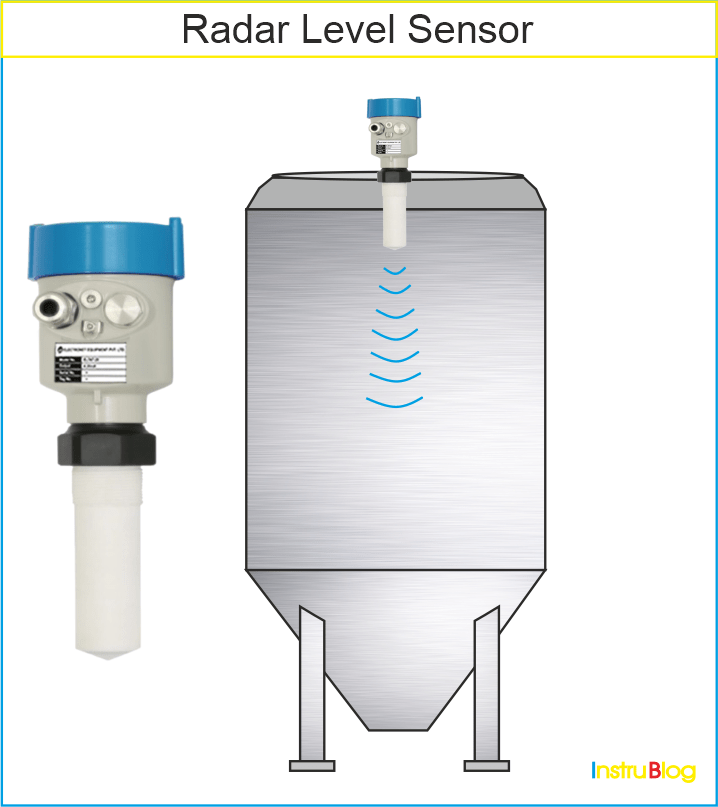
Radar level sensors offer several advantages that make them highly beneficial for level measurement applications:
- High accuracy: They are known for their high accuracy in measuring the level of liquids, solids, or slurry. They provide precise and reliable measurements, allowing for better process control and optimization.
- Non-contact measurement: They operate on a non-contact principle, which means they do not require physical contact with the measured substance. This eliminates the risk of sensor contamination, wear and tear, and interference with the material being measured.
- Obstruction detection: They have the ability to detect obstructions in chutes or presses. They can identify the presence of any solid objects or blockages that may hinder the smooth flow of material, ensuring efficient and safe operation.
- Versatility in challenging environments: They are suitable for use in various industries and applications, including those with harsh or difficult-to-handle substances. They can withstand extreme temperatures, pressures, and corrosive environments, making them reliable and durable even in challenging conditions.
- Wide range of applications: They find applications in a wide range of industries such as chemical, petrochemical, food and beverage, water and wastewater treatment, mining, and many others.
Conclusion:
In this article, we have explored the fundamentals of level measurement and discussed various sensors used in the process.
For point level measurement, sensors such as Capacitance, Resistance, and Tuning Fork are commonly employed. These sensors enable the detection of specific levels or thresholds in tanks or vessels, triggering outputs or indications when those levels are reached.
On the other hand, continuous level measurement utilizes sensors like ultrasonic and optical level sensors. These sensors provide real-time monitoring of the level of liquids or solids in storage tanks or vessels, offering continuous and precise measurements.
Each of these sensor technologies has its own advantages and is suited for specific applications based on factors such as the nature of the material being measured, environmental conditions, and accuracy requirements.
By understanding the various level measurement technologies available, industries can select the most appropriate sensor for their specific needs, ensuring accurate and reliable level monitoring in their processes.
I hope you like above blog. There is no cost associated in sharing the article in your social media. Thanks for reading!! Happy Learning!!

